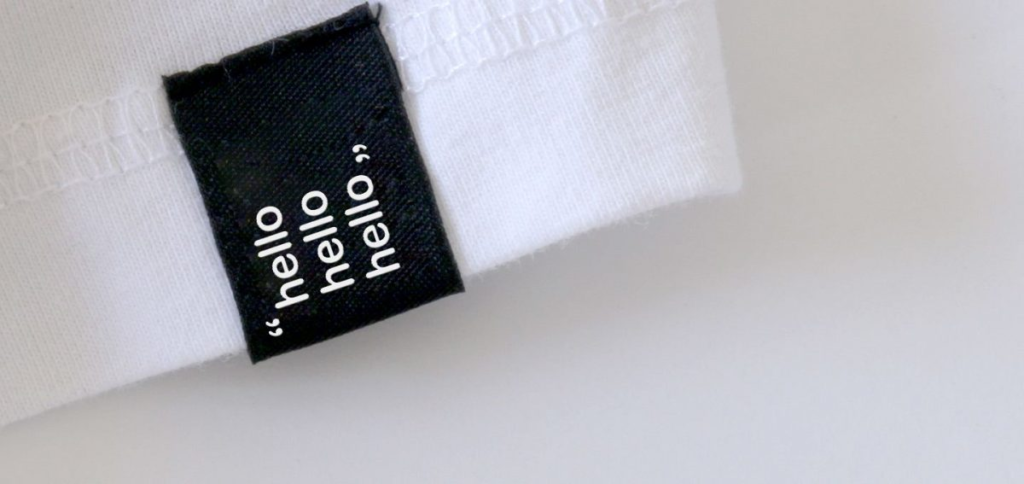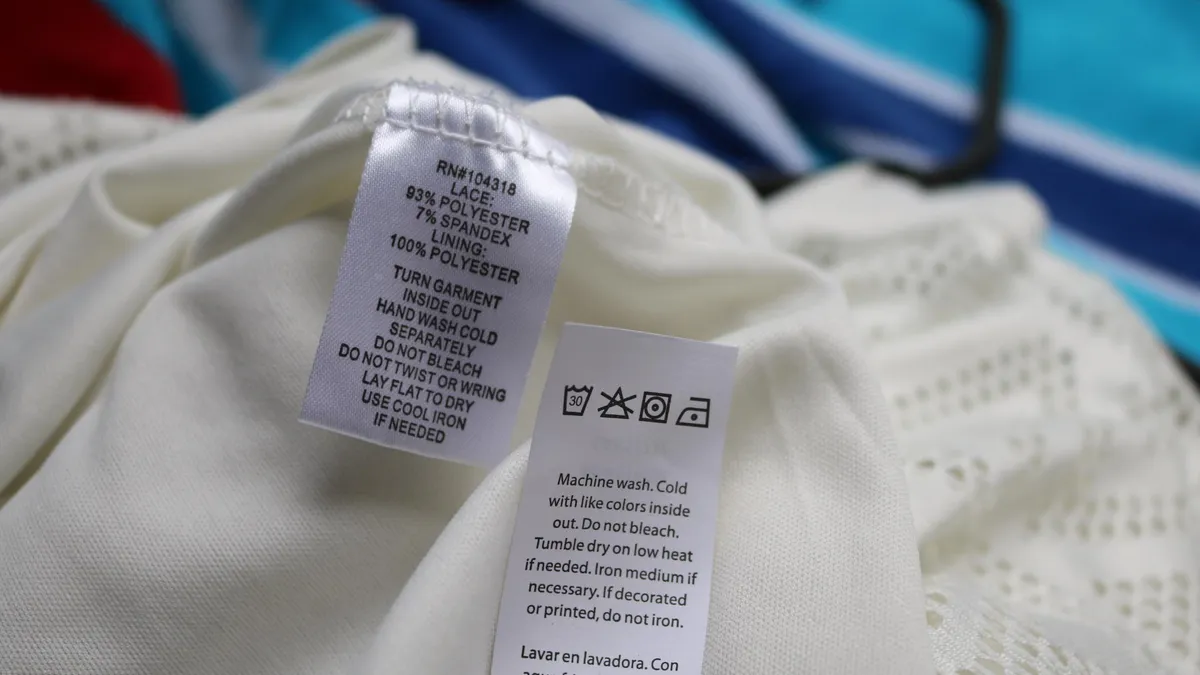Labels on shirts often go unnoticed by most people, but they play a crucial role in the garment industry. These small pieces of fabric, usually sewn into the back of the neckline or side seam, provide important information about the labels on shirts, from fabric composition and washing instructions to the country of origin and size. In this article, we’ll explore why labels are so important, how they impact consumer decision-making, and the role they play in fashion branding, sustainability, and compliance with global standards.
The Role of Labels in Clothing Identification
One of the most obvious reasons for having labels on shirts is identification. The label often contains essential information like the brand name, which helps distinguish the shirt in a crowded market. With hundreds of clothing brands available, a label provides a unique identity for a shirt. This small tag becomes an ambassador for the brand, carrying its logo, slogan, or even unique selling propositions such as “100% Organic Cotton” or “Made in Italy.”
Without labels, it would be difficult for consumers to identify their favorite brands, and counterfeit garments would easily infiltrate the market. Labels help customers remain loyal to certain brands and quality standards. For instance, many people trust high-end labels for luxury and are willing to pay premium prices for shirts bearing those labels.

Fabric Composition and Care Instructions
Another critical piece of information that labels provide is the shirt’s fabric composition. Whether the shirt is made from cotton, polyester, linen, or a blend of different fabrics, the label informs the consumer about what they’re buying. This is important not only for aesthetic and comfort reasons but also for health and environmental concerns. Some people have allergies to synthetic fibers or prefer natural fabrics like cotton, so labels help them make informed choices.
The care instructions are equally significant. Labels tell us how to properly care for the shirt, indicating whether it can be machine washed, hand washed, dry cleaned, or tumble dried. They also provide information about the appropriate washing temperature and ironing settings. Ignoring these instructions can easily lead to shrinking, fading, or damaging the fabric, shortening the life of the garment.
Imagine owning a luxurious silk shirt without knowing how to clean it properly. Washing it in hot water or using the wrong detergent could ruin its delicate fibers. Therefore, the label serves as a guide to help maintain the shirt’s longevity and quality.
Size and Fit: Making Shopping Easier
Size is another crucial element found on shirt labels. Shopping for clothes without a size label would be chaotic. Sizes typically come in standardized categories such as small (S), medium (M), and large (L), or numeric measurements like 38, 40, or 42 for men’s shirts. Some brands offer more specific sizes that account for body shape variations, such as slim fit, regular fit, and plus-size options.
Inconsistent sizing is an issue many consumers face, especially when shopping online, so size labels help reduce some of that confusion. Many brands have slightly different interpretations of size charts, but a label still gives the customer a general idea of whether the shirt will fit them. Some brands even include sizing information on multiple aspects like neck size, sleeve length, and chest width, which is particularly helpful for tailored clothing.
Moreover, size labels aid in inventory management for retailers. Being able to categorize shirts by size allows shops to keep their stock organized and makes it easier for consumers to find the right fit.
Labels and Fashion Branding
Branding is one of the most critical aspects of the fashion industry, and labels are a powerful tool for building brand recognition and loyalty. For many people, wearing a shirt with a recognizable label adds value to the garment itself. In some cases, the label becomes synonymous with the product’s quality, style, or exclusivity. Take, for example, shirts from brands like Ralph Lauren, Lacoste, or Gucci— the label is often a selling point, indicating that the shirt adheres to certain standards of luxury or craftsmanship.
Some brands also use labels to emphasize their commitment to sustainability or ethical practices. You might find labels that say, “Made from Recycled Materials” or “Fair Trade Certified,” appealing to the growing number of eco-conscious consumers. In this case, the label becomes not just a marker of identity but also a form of ethical communication between the brand and the consumer.
For high-end brands, the label is sometimes the only differentiating factor between a legitimate product and a counterfeit. Counterfeiters often replicate the look and feel of luxury garments but can’t perfectly replicate the labels. As such, many high-end fashion houses invest in intricate label designs or even embed security features in their labels to combat counterfeiting.

Compliance and Legal Standards
In many countries, labeling clothing is not just a choice; it’s a legal requirement. Labels must comply with specific industry standards and regulations. These laws vary from country to country, but they generally require labels to include information on fabric content, care instructions, and the country of origin. This is crucial for several reasons, including consumer protection, transparency, and fair trade practices.
For example, in the United States, the Federal Trade Commission (FTC) requires that garments sold in the country provide clear labeling regarding fabric composition and care. Similarly, the European Union has its own set of regulations under the EU Textile Regulation, mandating that textile products be labeled or marked with the fiber composition to ensure that consumers know what they are buying.
Labels also play a role in ethical trade practices, ensuring that garments are produced in compliance with labor laws and environmental regulations. In this regard, the country of origin label becomes particularly important, as it helps consumers identify whether a product was made in a country known for fair labor standards or whether it was produced in a location where working conditions may be less than ideal.
Sustainability and Environmental Considerations
Sustainability is a growing concern in the fashion industry, and labels are increasingly used to inform consumers about the environmental impact of their clothing. As mentioned earlier, some brands use labels to showcase their commitment to sustainability by highlighting eco-friendly practices such as using organic or recycled materials. Labels might also indicate whether the shirt was produced using energy-efficient processes or under fair labor conditions.
In the case of fast fashion, where garments are produced quickly and inexpensively, labels often serve as a red flag. A shirt made from synthetic fabrics like polyester or nylon may be cheaper, but it’s also less biodegradable than a cotton or hemp shirt. Many environmentally-conscious consumers look to the label for clues about a shirt’s environmental footprint, seeking out materials that are renewable, sustainable, or responsibly sourced.
Moreover, consumers are becoming increasingly aware of the afterlife of their clothing. Some labels now include information on how the garment can be recycled or repurposed, contributing to the growing trend of circular fashion. Brands that use biodegradable or recyclable materials often feature this prominently on their labels, helping consumers make environmentally responsible choices.
Evolving Label Technology
Technological advancements have also affected the way labels are used in clothing. Beyond traditional fabric labels, some companies have started using QR codes or RFID (Radio-Frequency Identification) tags embedded in the labels. These technologies allow consumers to scan the label with their smartphones to access more detailed information about the product, such as its supply chain history, ethical certifications, or even styling tips.
RFID tags are also used by retailers for inventory management and anti-theft measures. While these are not visible to the consumer in the same way traditional labels are, they provide an added layer of functionality that benefits both the seller and the buyer.

Conclusion
labels on shirts are far more than just a formality. They serve as a bridge between the garment and the consumer, providing critical information about fabric composition, care instructions, size, and branding. They are essential for compliance with legal and ethical standards and play a growing role in the movement towards sustainability in fashion. Additionally, as technology continues to evolve, labels are becoming more interactive, offering consumers a deeper understanding of the products they purchase.
While they may be small, labels carry significant weight in terms of their impact on consumer choices and the fashion industry as a whole. They help us maintain the quality of our clothes, express our values, and make informed purchasing decisions. So, the next time you put on a shirt, take a moment to appreciate the label—it’s doing more than you might think.
